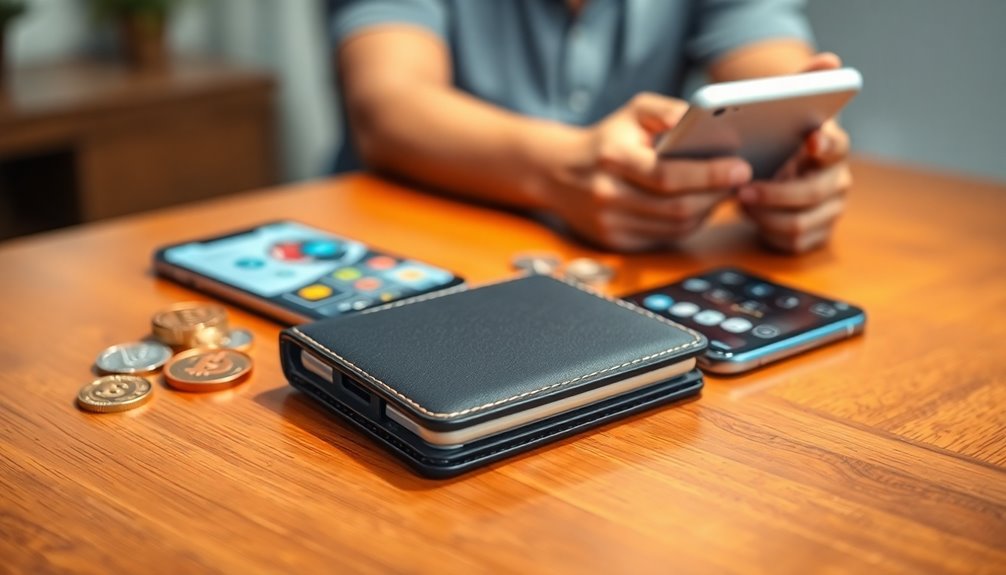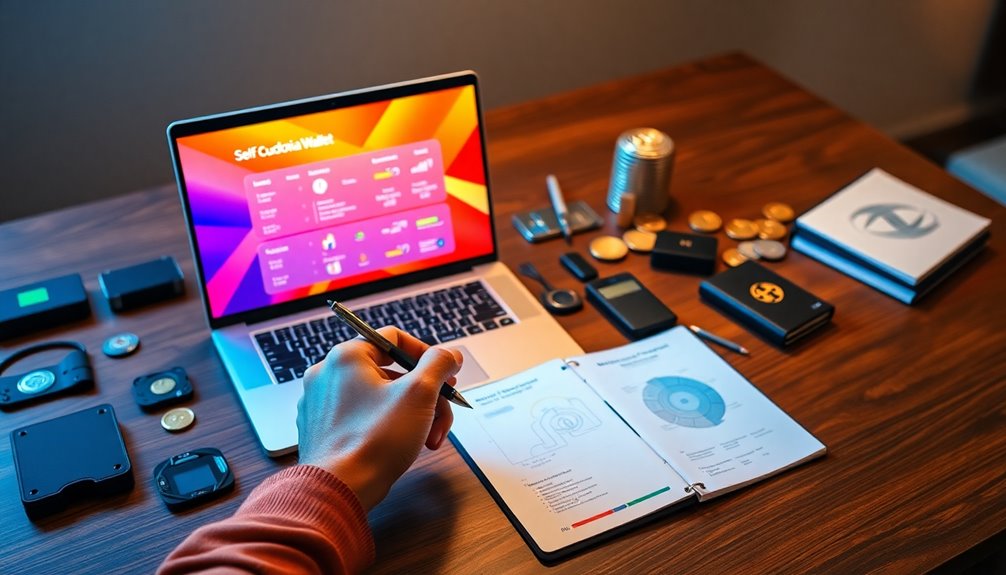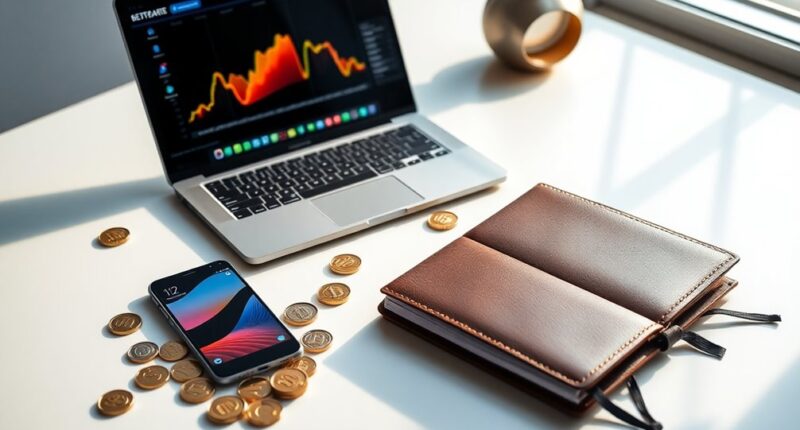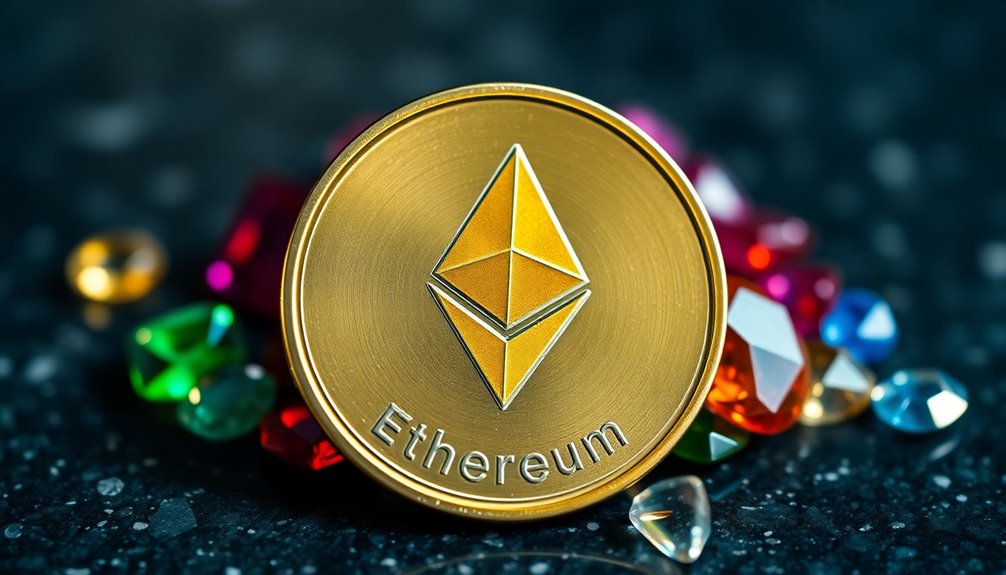Self-custodial wallets give you full control over your cryptocurrency, letting you manage your assets securely without relying on third parties. They enhance privacy and allow you to interact directly with decentralized applications. However, you'll need to be cautious about managing private keys since losing them can mean irreversible losses. Security features like two-factor authentication, encryption, and multi-signature options help protect your wallet from threats. Understanding the pros and cons, as well as best practices for security, is crucial. There's much more to explore, including wallet types and integration with decentralized finance, so keep going!
Key Takeaways
- Self-custodial wallets offer complete control over private keys, enhancing security and user autonomy while managing cryptocurrencies and digital assets.
- Implement robust security measures like 2FA, encryption, and regular updates to protect against vulnerabilities and phishing attacks.
- Users must understand the complexities of private key management to avoid irreversible losses and ensure their assets remain secure.
- Self-custodial wallets enable direct interaction with DeFi applications, allowing users to participate in yield farming and lending without intermediaries.
- Community resources, such as forums and security advisories, provide essential updates and tips for enhancing wallet security and user education.
Key Features Overview

When exploring self-custodial wallets, you'll quickly notice several key features that set them apart from traditional wallets.
First, security measures like two-factor authentication (2FA), encryption, and biometric locks provide robust protection for your assets. Many wallets even include tamper-resistant environments and self-destruct mechanisms, ensuring your private keys stay safe. Additionally, these wallets offer enhanced security through self-custody, allowing users to manage their private keys without relying on third-party custodians.
You'll also appreciate the user-friendly interface designed for both beginners and advanced users, allowing for easy navigation and customizability.
Compatibility is another significant advantage; these wallets support multiple blockchains and custom tokens, enabling you to manage various cryptocurrencies in one place.
Understanding Self-Custodial Wallets

Self-custodial wallets represent a significant shift in how you manage your digital assets.
These wallets give you complete control over your private keys, which are vital for signing transactions. Without any third-party involvement, you enjoy increased privacy and autonomy, enabling you to manage your assets directly. Self-custodial wallets allow users full control over their private keys, enhancing privacy and censorship resistance.
Self-custodial wallets are also censorship-resistant, meaning no authority can freeze or seize your funds. You won't need to provide personal information to set one up, enhancing your privacy.
However, you'll bear the responsibility for securing your private keys, which can be complex for beginners. Options include hardware wallets, software wallets, and even paper wallets, each offering unique ways to store and access your cryptocurrency securely.
Transaction Verification Process

How can you be sure your cryptocurrency transactions are legitimate? The transaction verification process involves several methods to confirm address ownership. One crucial aspect of ensuring legitimacy is the use of blockchain technology, which provides a transparent and immutable record of transactions. Additionally, compliance with regulations and anti-money laundering practices is essential for maintaining the integrity of the market. For instance, the recent case involving the tornado cash cofounder moneylaundering defense highlights the ongoing scrutiny surrounding crypto transactions and the importance of adhering to legal standards in the industry.
You might take a screenshot or video of your wallet showing the withdrawal address, but this can be error-prone and costly. Alternatively, you could use the Satoshi Test, sending a small amount to prove control over the address, which offers a more secure way to verify.
For advanced users, message signing provides cryptographic proof, though it requires wallet support. The Address Ownership Proof Protocol (AOPP) automates the verification process for a seamless experience. Additionally, self-hosted wallets can complicate compliance due to the lack of ownership verification.
Lastly, multi-signature transactions add an extra layer of security, ensuring that more than one private key is needed to authorize any transaction.
Pros and Cons Summary

Navigating the world of self-custodial wallets comes with distinct pros and cons that every user should consider.
On the plus side, you gain full control over your funds, enhanced privacy, and independence from third-party providers. This autonomy allows you to interact with decentralized applications (DApps) without restrictions. Additionally, self-custody wallets promote increased asset control, which is appealing to many users who prioritize security.
However, there are challenges too. You'll need to manage private keys securely, which can be complex, especially for beginners. The risk of losing access to your funds due to misplaced keys is real.
While you enjoy increased security and privacy, the lack of customer support can make recovery difficult.
Weighing these pros and cons will help you decide if a self-custodial wallet aligns with your needs.
Wallet Types Overview

When exploring wallet options, understanding the different types of self-custodial wallets can significantly impact your crypto experience.
You have hardware wallets, like Ledger and Trezor, which store your private keys offline for maximum security. Non-custodial wallets allow users to control their private keys, enhancing security and independence.
Software wallets, such as MetaMask and Trust Wallet, offer convenience and functionality, ideal for frequent transactions and DeFi activities.
For those seeking high-security cold storage, paper wallets provide offline key storage but can be fragile.
Lastly, hybrid wallets, like Exodus, combine hardware and software features, allowing for comprehensive crypto management with built-in exchanges and staking rewards.
Each type caters to different needs, so choose wisely based on your usage and security preferences.
Security Vulnerabilities and Threats

While self-custodial wallets offer greater control over your crypto assets, they also come with inherent security vulnerabilities and threats that you need to be aware of.
Losing your seed phrase can lead to irreversible losses, as it serves as a single point of failure. Many users store their seed phrases in plaintext, making them susceptible to theft. The reliance on seed phrases creates significant security risks, as they are often stored insecurely, increasing the potential for theft.
Hacking risks are prevalent, especially with hot wallets and browser extensions that hackers often target. Additionally, protocol flaws and lack of standardization can expose you to security breaches.
Human error plays a significant role too; weak passwords, neglecting two-factor authentication, and inadequate backups can compromise your wallet's security.
Staying informed and vigilant is essential to protect your assets.
Decentralized Finance Integration

Decentralized finance (DeFi) integration transforms how you manage and interact with your digital assets by providing a seamless, user-centric experience.
With DeFi wallets, you enjoy full autonomy over your assets, allowing direct interaction with blockchain networks without intermediaries. These wallets support various blockchain protocols, enabling smooth transactions and access to decentralized applications (dApps) for activities like yield farming and lending. Self-custody wallets significantly reduce reliance on third parties, enhancing the security and control you have over your funds.
You can manage a diverse range of digital assets, including cryptocurrencies, stablecoins, and NFTs. For businesses, self-custody wallets enhance customer trust and comply with regulatory requirements while reducing reliance on third parties.
Regular Software Updates

Managing your digital assets effectively also hinges on keeping your self-custodial wallet up to date. Regular software updates are crucial for security, as they fix vulnerabilities that could expose you to hacks or data breaches. Additionally, updates often bring new features and bug fixes that enhance your wallet's functionality and user experience. Neglecting updates can lead to malware exposure, data corruption, and legal issues due to non-compliance with regulations. To stay secure, enable automatic updates or regularly check for them manually. Always back up your wallet data before updating, and verify the sources of updates to avoid phishing attempts. Staying informed through community forums and security advisories helps ensure your wallet remains safe and effective. Moreover, keeping your wallet updated enhances private key control, which is essential for maintaining ownership of your digital assets.
Frequently Asked Questions
How Do I Choose the Best Self-Custodial Wallet for My Needs?
To choose the best self-custodial wallet for your needs, start by assessing your security priorities.
Look for wallets with strong encryption and two-factor authentication.
Next, consider the user interface—opt for something intuitive that matches your tech comfort level.
Ensure it supports the cryptocurrencies you plan to use and offers essential features like backups and recovery options.
Lastly, explore any additional tools that enhance your privacy and transaction control.
Can I Use a Self-Custodial Wallet on Multiple Devices?
Imagine juggling multiple balls in the air; that's what managing your assets across devices feels like.
Yes, you can use a self-custodial wallet on multiple devices! Many software wallets, like Trust Wallet and MetaMask, let you install them on desktops, tablets, and mobiles.
They sync your assets, so you'll always have access. Just remember to secure your private keys with strong methods to keep your funds safe while you're on the go!
What Happens if I Lose Access to My Wallet?
If you lose access to your wallet, you risk permanent loss of your funds, especially if you haven't backed up your recovery phrase.
Without it, regaining access is impossible. If your device gets compromised or you misplace your recovery phrase, accessing your funds becomes a challenge.
To avoid this, regularly back up your recovery phrase and store it securely in multiple locations.
Taking these precautions helps protect your assets from loss.
Are There Fees Associated With Using Self-Custodial Wallets?
Yes, there are fees associated with using self-custodial wallets.
You'll encounter annual service fees based on your account type and average balance. Withdrawal fees apply when you move assets out of your wallet, but deposits are free.
Additionally, if you have a significant amount of assets, you may face tiered fees on your balance.
It's essential to consider these costs to understand the overall expense of managing your crypto assets effectively.
How Do I Transfer Funds From a Self-Custodial Wallet to an Exchange?
To transfer funds from your self-custodial wallet to an exchange, first, verify the wallet's compatibility and check the exchange's requirements.
Backup your seed phrase and enable two-factor authentication for security.
Generate the receiving address from the exchange, enter it correctly in your wallet, and initiate the transfer.
Confirm the transaction details before submitting, then wait for the blockchain to confirm your transfer.
Finally, monitor your exchange account to ensure the funds arrive.
Conclusion
So there you have it—self-custodial wallets: the digital treasure chests where you're the pirate, but also the ship's captain, navigator, and sometimes, the one who forgot the map. While you're busy dodging security threats and software updates like they're pesky seagulls, remember that the real treasure lies in your ability to control your own assets. Just don't blame the ocean if you sink; after all, you chose to sail solo! Happy treasure hunting!
















